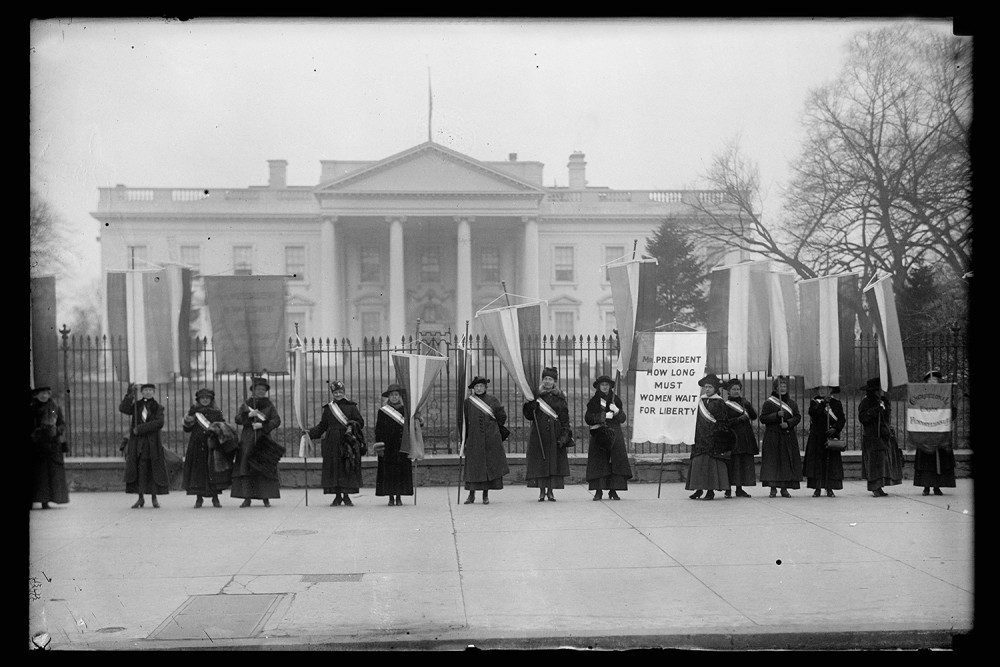Erasing women
The Trump administration’s moves against women leaders are not new. We’ve been here before.

Suffragettes protest at the White House in 1917 (Harris & Ewing / US Library of Congress)
Women are losing power daily under the second Trump administration. This January, NASA officials received an urgent, “drop everything and reprioritize your day” email via the federal government: the Trump administration was demanding they scrub NASA websites of any mention of DEI, or words that could refer to underrepresented groups of Americans or environmental justice. Also on the chopping block? “Anything specifically targeting women (women in leadership, etc.).”
By March, NASA had neutered the mission statement of its Artemis moon landing, erasing a sentence clarifying their intention to “land the first woman, first person of color, and first international partner astronaut on the Moon.” By mid-April, even a free educational graphic novel called First Woman—depicting a fictional diverse crew piloting a NASA moon landing—had disappeared from the site.
In late April, Defense Secretary Pete Hegseth dismantled the “Women, Peace & Security” program at the Defense Department because the champions of the program had supposedly been U.N. “feminists and left-wing activists.” (President Trump had actually signed the bipartisan bill into law during his first term in 2017.)




